
The good news: recent China soybean purchases continue to show up in USDA’s weekly export inspection data. The not-so-good news: the influx of new export inspections is still not keeping pace with the rate needed to match USDA forecasts.
“Shipments have not matched the pace of stepped-up Chinese buying, with buyers there accounting for only 9.7 million bushels of this week’s inspections,” according to Farm Futures senior grain market analyst Bryce Knorr. “Other customers continue to take delivery, and some movement was even noted out of Toledo during the past week, mostly bound for Thailand.”
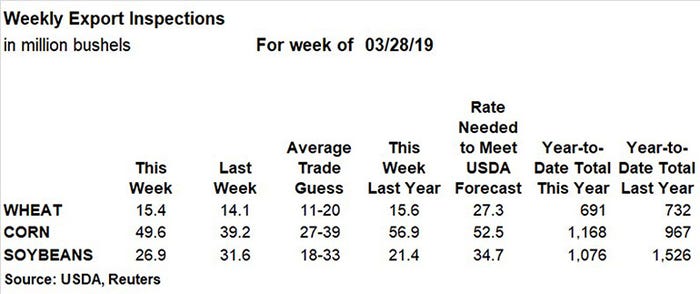
Overall, China accounts for 17% of U.S. inspections, compared to its share of 27% of sales and shipments, Knorr adds.
“Year-to-date soybean inspections for 2018/19 are 29% below those in the prior marketing year; U.S. forecasts only a 12% for the marketing year as a whole, so we’ll need to move out nearly 35 million bushels every week through the end of August to reach that goal,” he says.
For the week ending March 28, soybean export inspections totaled 26.9 million bushels, lagging behind the prior week’s total of 31.6 million bushels but in the middle of trade estimates that ranged between 18 million and 33 million bushels. The weekly rate needed to match USDA forecasts is now 34.7 million bushels. Cumulative totals for 2018/19 have reached 1.076 billion bushels, falling almost 30% behind the prior year’s pace of 1.526 billion bushels.
Aside from China accounting for 9.7 million bushels last week, other top destinations for U.S. soybean export inspections included Indonesia (4.1 million), Mexico (2.7 million), Pakistan (2.5 million), South Korea (2.3 million) and Egypt (2.1 million).
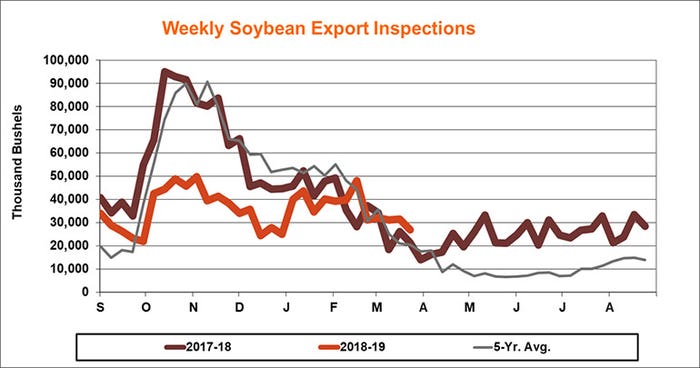

U.S. corn export inspections last week totaled 49.6 million bushels, moving moderately ahead of the prior week’s tally of 39.2 million and landing above the average trade guess, which ranged between 27 million and 39 million bushels. The weekly rate needed to match USDA’s forecasts is still an aggressive 52.5 million bushels, although cumulative totals in 2018/19 of 1.168 billion bushels is outmatching last year’s pace by nearly 21%.
“Corn inspections were up last week but lag behind the weekly rate needed to reach USDA’s forecast,” Knorr notes. “Still, a strong start to the marketing year gives corn a cushion to work with. With so much corn and soybeans likely moving over the spring and summer, barge freight forwards are running at very expensive levels into the end of the marketing year, which could affect basis markets.”
Mexico was the No. 1 destination for U.S. corn export inspections last week, with 14.0 million bushels. Other top destinations included Japan (9.2 million), Colombia (6.3 million), Peru (5.7 million), South Korea (2.9 million) and Vietnam (2.7 million).
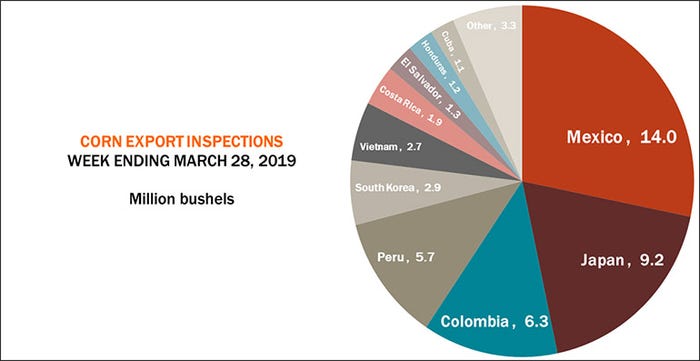
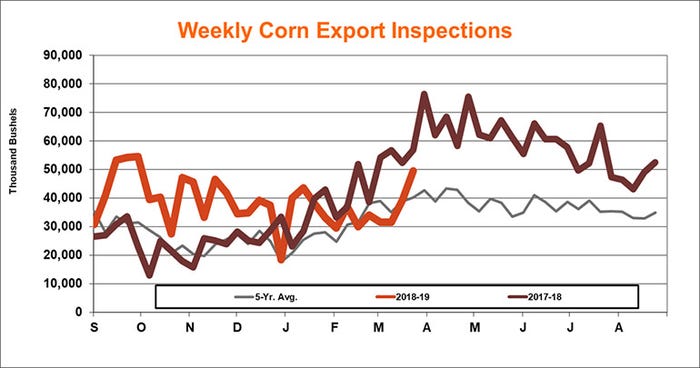
Wheat export inspections reached 15.4 million bushels last week, besting the prior week’s tally of 14.1 million bushels and landing in the middle of trade estimates that ranged between 11 million and 20 million bushels. The weekly rate needed to meet USDA forecasts still moved higher, now at 27.3 million bushels. Cumulative totals for 2018/19 are now at 691 million bushels, down 5.6% year-over-year.
Guatemala was the No. 1 destination for U.S. wheat export inspections last week, with 3.5 million bushels. Other top destinations included Nigeria (1.9 million), Egypt (1.8 million), Rwanda (1.8 million) and Japan (1.8 million).

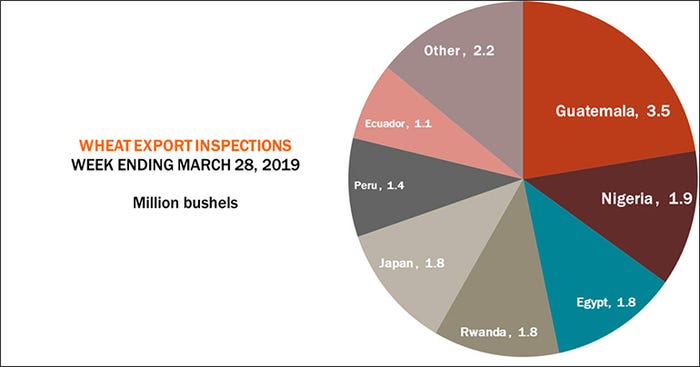
About the Author(s)
You May Also Like






